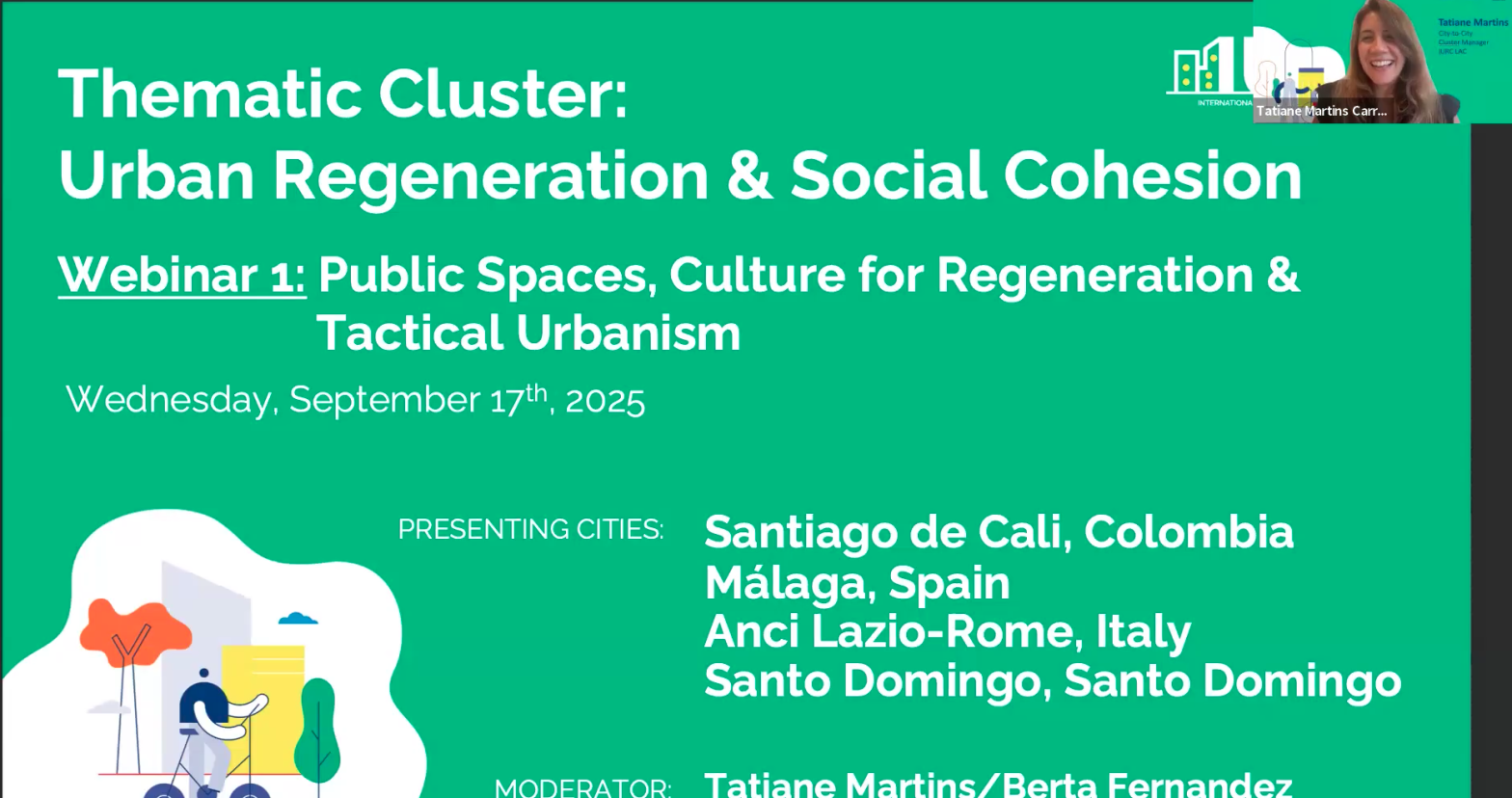The International Urban and Regional Cooperation (IURC) Latin America and the Caribbean programme held the first webinar of its thematic network series on 17 September 2025, gathering 48 participants from Europe, Latin America, and the Caribbean. The session marked the start of a series dedicated to urban regeneration and social cohesion, bringing together cities facing common challenges of heritage preservation, citizen participation, tourism management, and inclusive development.
Moderated by Tatiane Martins Carrer, the event created a platform for cities to share concrete strategies and projects, with presentations from Santiago de Cali (Colombia), Malaga (Spain), ANCI Lazio/Rome (Italy), and Santo Domingo (Dominican Republic). The discussions demonstrated how local authorities are innovating in areas such as tactical urbanism, climate resilience, and sustainable mobility, while also underscoring the importance of cultural heritage and social cohesion.
Santiago de Cali – Revitalizing the Historic Center with Citizen Participation
Diego Andrés, Director of the Planning Department, presented Cali’s strategy to address long-term challenges in its historic center, including physical deterioration, socio-spatial inequities, and depopulation. The plan combines heritage preservation with modern urban functions, promoting mixed-use development to attract new residents and businesses.
Cali is emphasizing green and sustainable development, leveraging its biodiversity and prioritizing projects that reconnect communities with underused urban spaces. Diego stressed that citizen participation is central: the city uses both digital channels and traditional methods, like paper newsletters, to reach diverse groups. Partnerships with the academic and private sectors further strengthen planning efforts. A dedicated team within the Planning Department focuses on building networks across community organizations to ensure inclusivity.
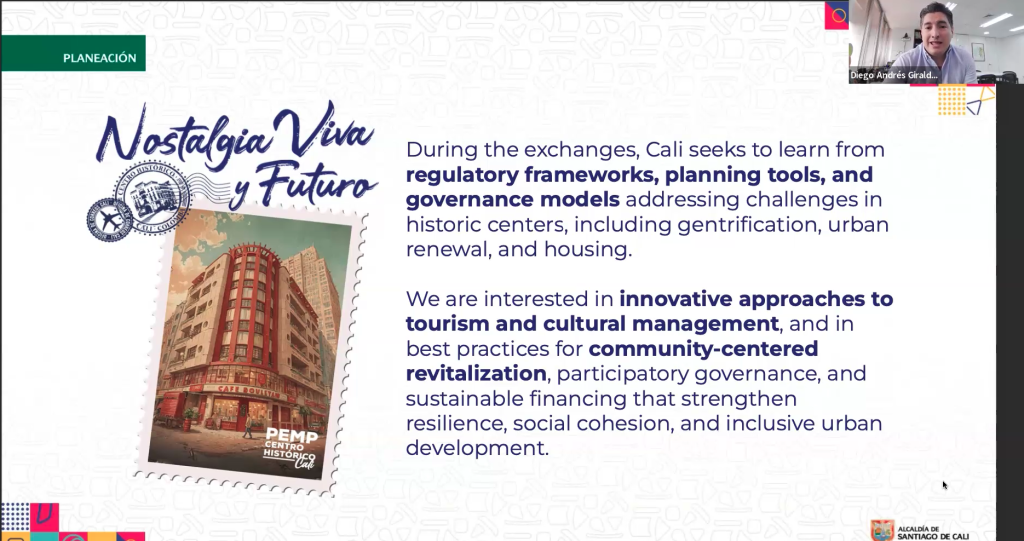
Malaga – Strategic Planning to Balance Tourism and Local Life
Nieves Fernandez, architect at the Malaga City Council, presented how the city has combined its role as a major tourism hub with efforts to preserve its identity and quality of life for residents. Since the early 1990s, Malaga has relied on strategic planning frameworks, including its 2030 Strategic Plan and the Urban Agenda, which have positioned the city as a model in Spain.
Two notable renewal projects, SOHO and Lagunillas, transformed once-declining neighborhoods into cultural and artistic districts through community engagement, European funding, and tactical urbanism approaches. Public spaces were reimagined as sites of creativity, fostering new cultural institutions and stimulating local innovation. Fernandez also underlined the city’s commitment to integrating technology and culture in urban regeneration, using European cohesion funds to achieve sustainability and inclusivity.
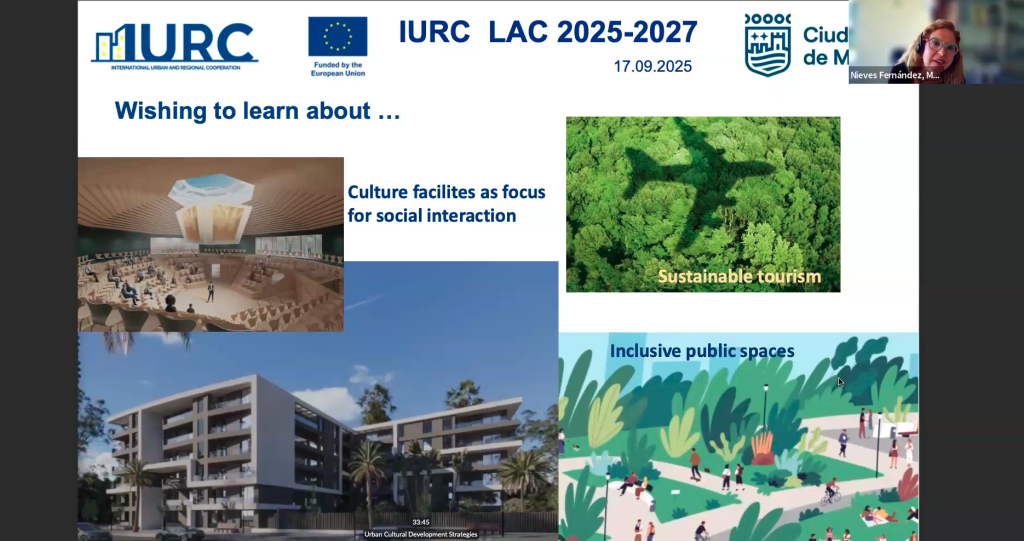
ANCI Lazio/Rome – Climate Resilience and Mediterranean Cooperation
Representing ANCI Lazio & Risorse per Roma, Claudio Bordi discussed Rome’s regional challenges, covering an area of 17,000 square kilometers and six million inhabitants. Key projects addressed climate resilience, water management, and urban innovation in the Mediterranean context.
He highlighted a successful cooperation with Barranquilla (Colombia), where public areas were transformed into green spaces and community gardens. This model, part of the GenerACTOR project, has been replicated in other European cities and offers lessons in scaling successful practices globally.
Claudio also spoke of the challenges of bureaucratic inertia and administrative barriers, stressing the importance of international partnerships to overcome institutional obstacles. By aligning regional innovation policies with EU cooperation mechanisms, Lazio aims to strengthen peri-urban areas and promote sustainable territorial development.
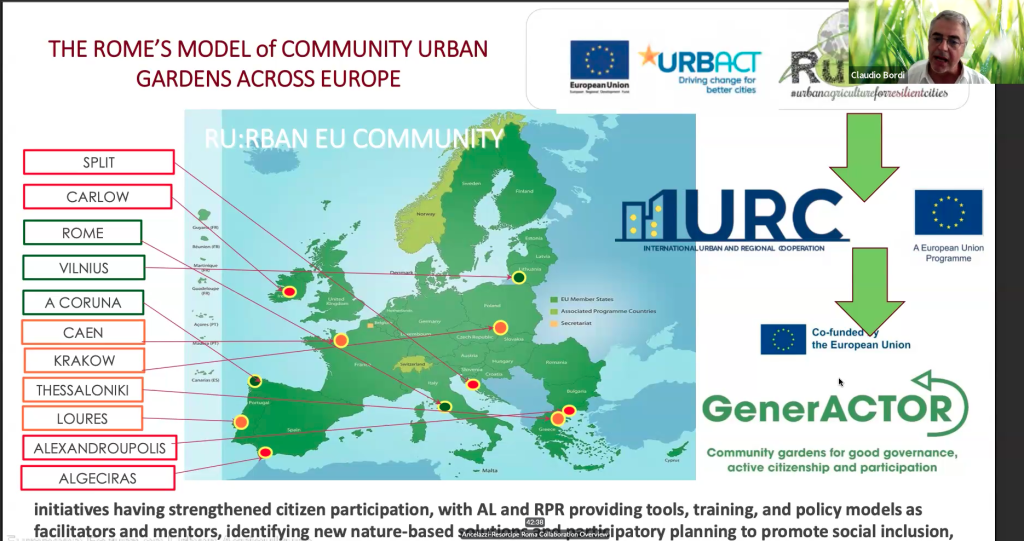
Santo Domingo – Preserving a UNESCO World Heritage City
Rosalia Ferís introduced Santo Domingo as the oldest European-founded city in the Americas, renowned for its UNESCO-recognized colonial center. Restoration efforts have been driven by significant public and private investments, targeting the revitalization of historic areas and sustainable mobility improvements, including electric buses and horse-drawn carriages.
While progress has been made in cultural preservation and tourism, the city faces high restoration costs and increasing housing pressure. Ferís emphasized the need to ensure that regeneration projects do not displace residents or undermine the colonial city’s unique character. Balancing large-scale tourism with community inclusion and cultural authenticity remains one of the city’s central challenges.
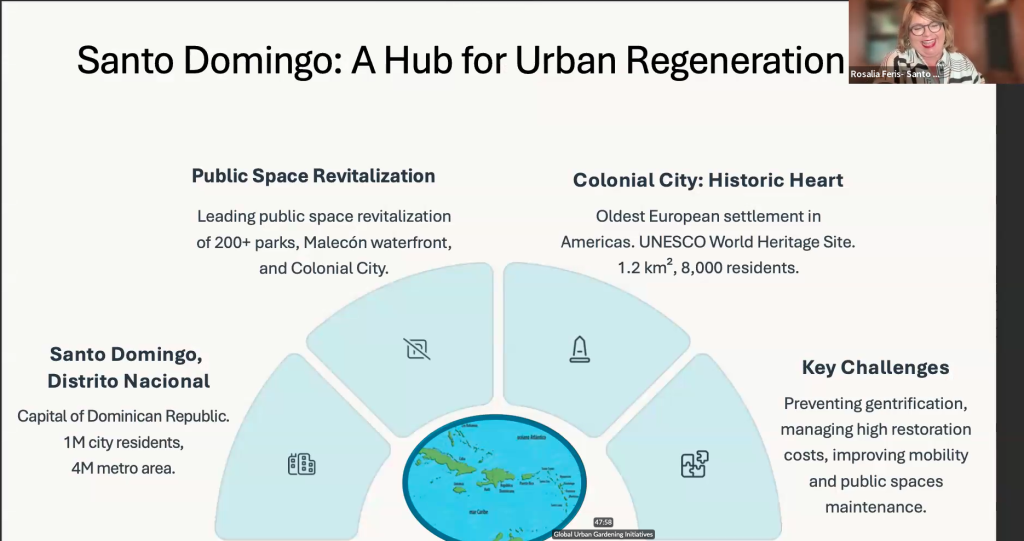
Shared Insights
The discussion among participants revealed common challenges, particularly around tourism pressures, gentrification, and the need for inclusive governance. Santo Domingo and Malaga compared strategies for balancing tourism growth with cultural preservation, while ANCI Lazio and Cali highlighted the importance of citizen participation and innovation ecosystems.
